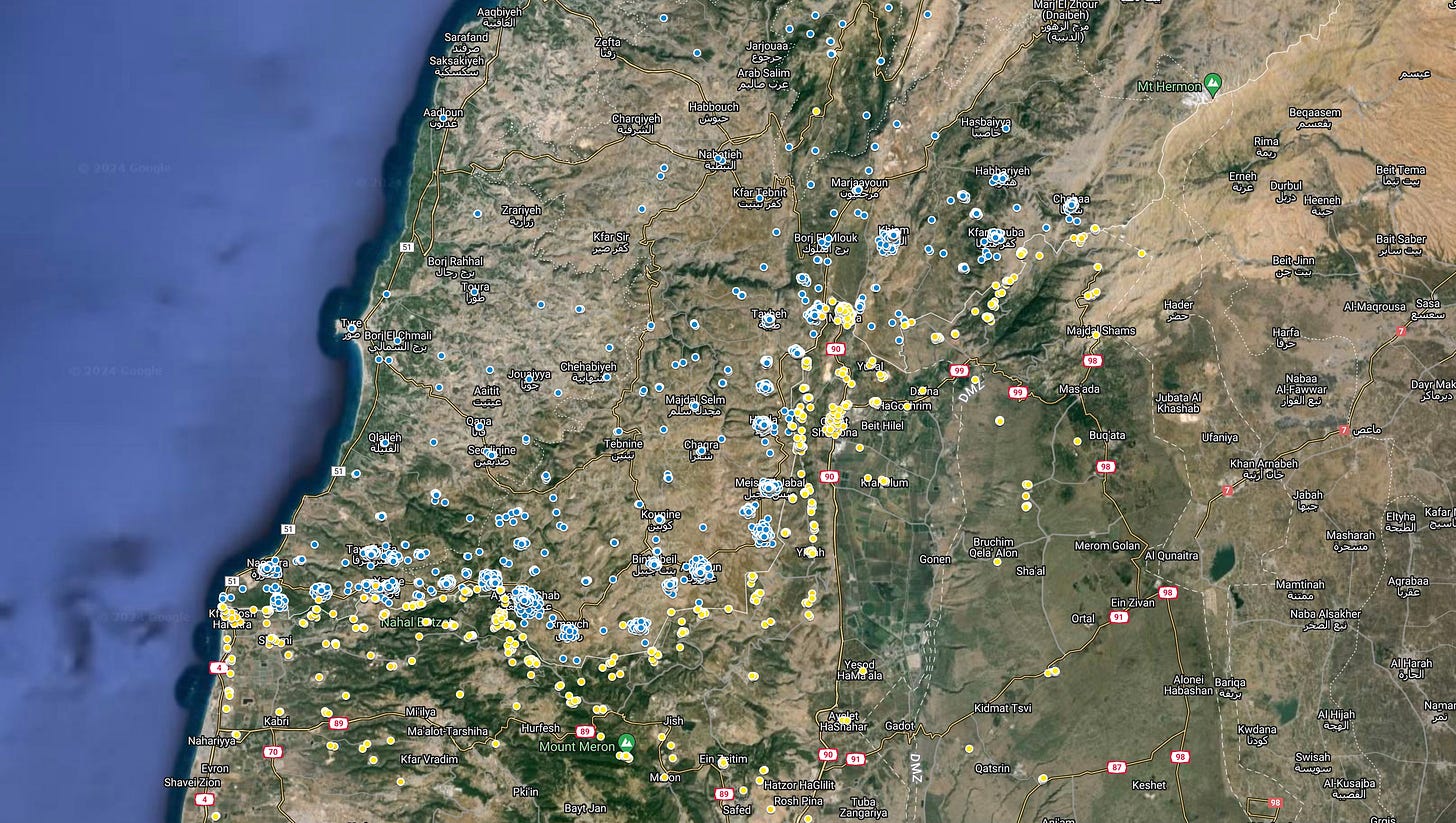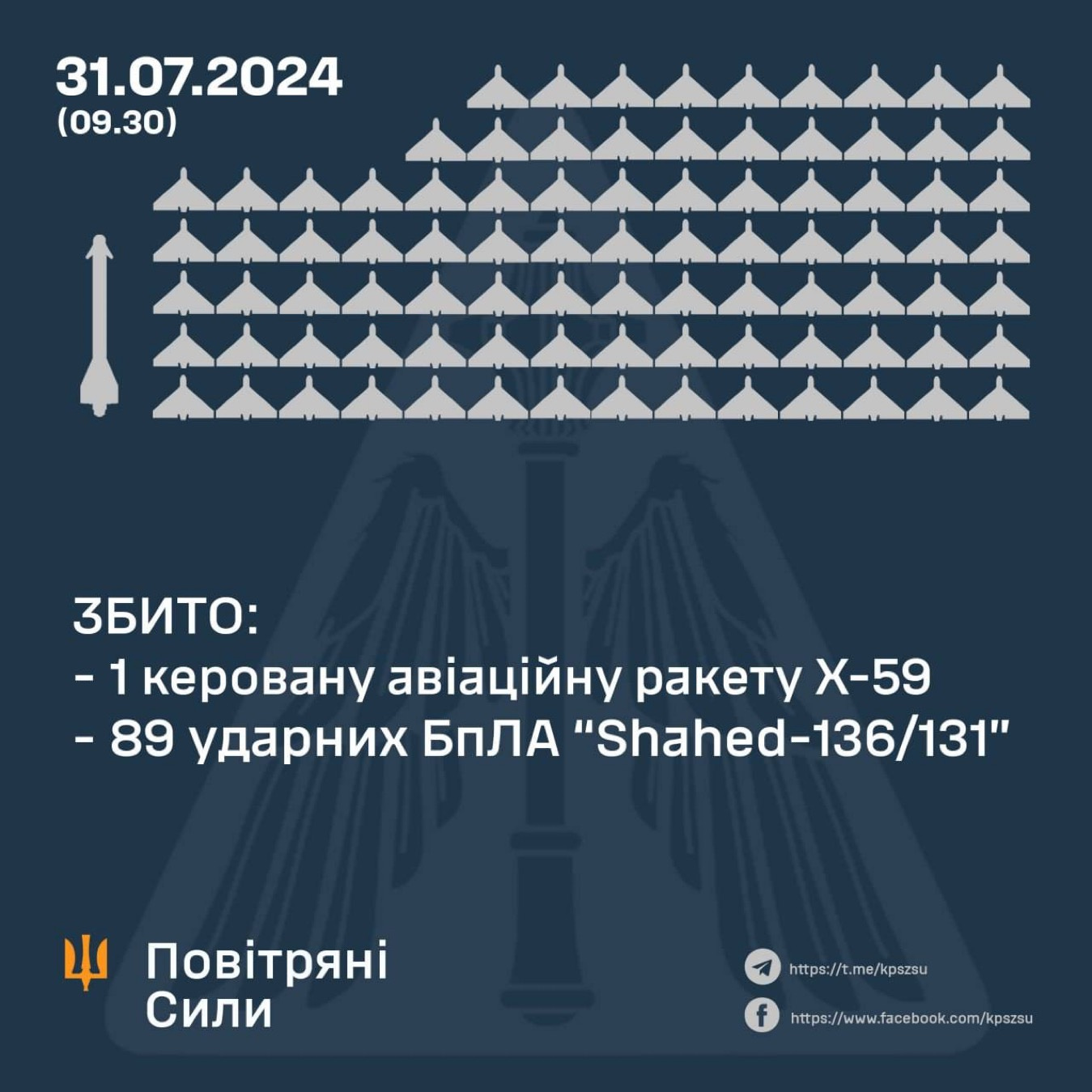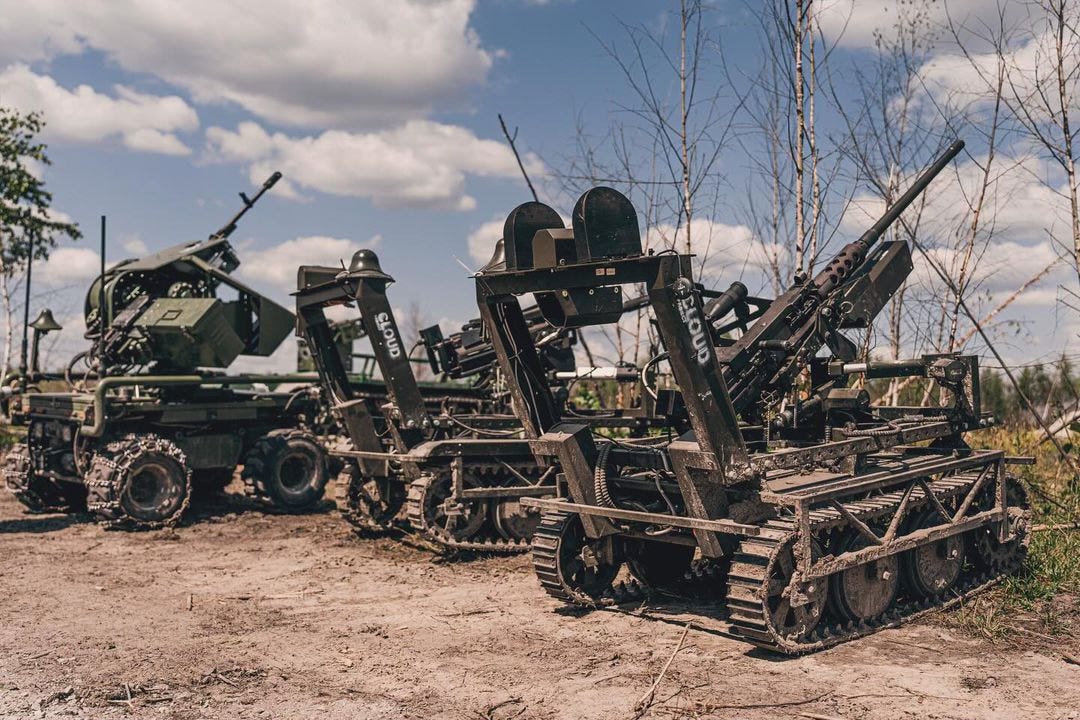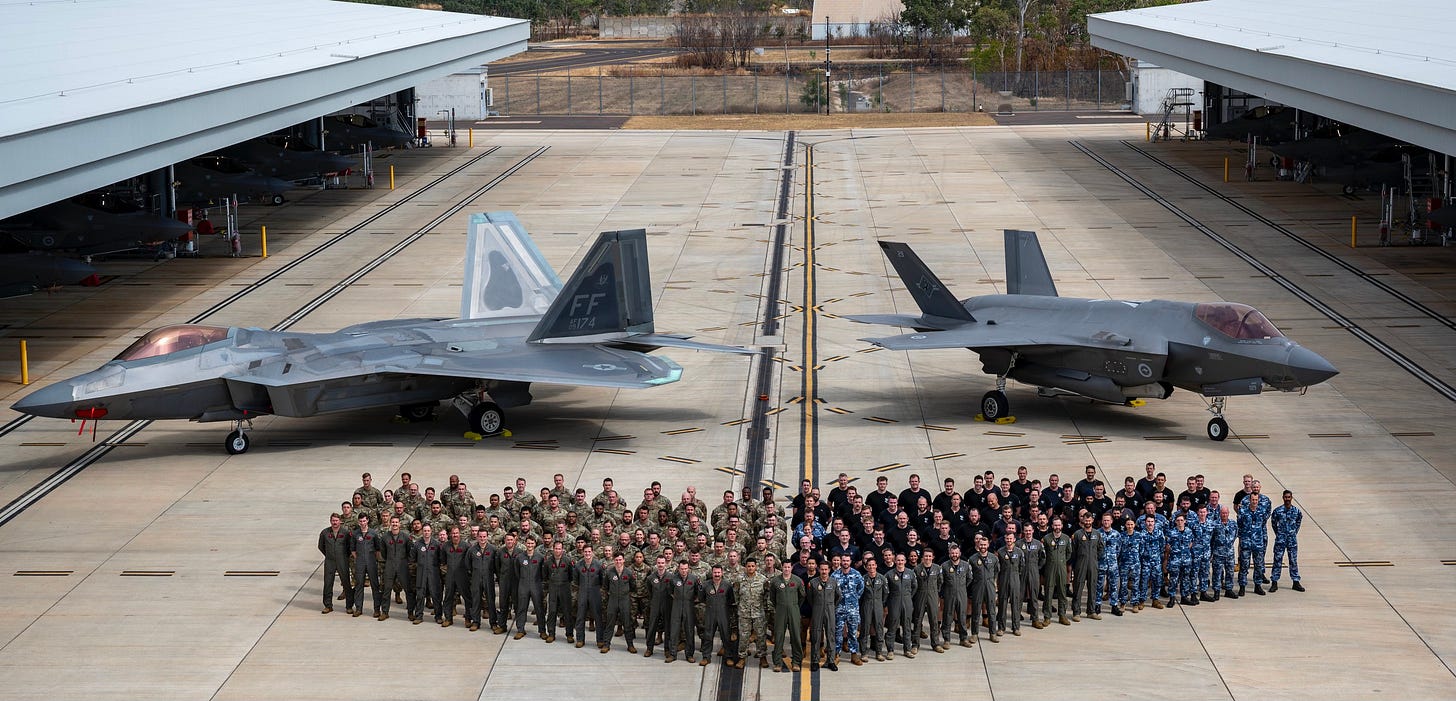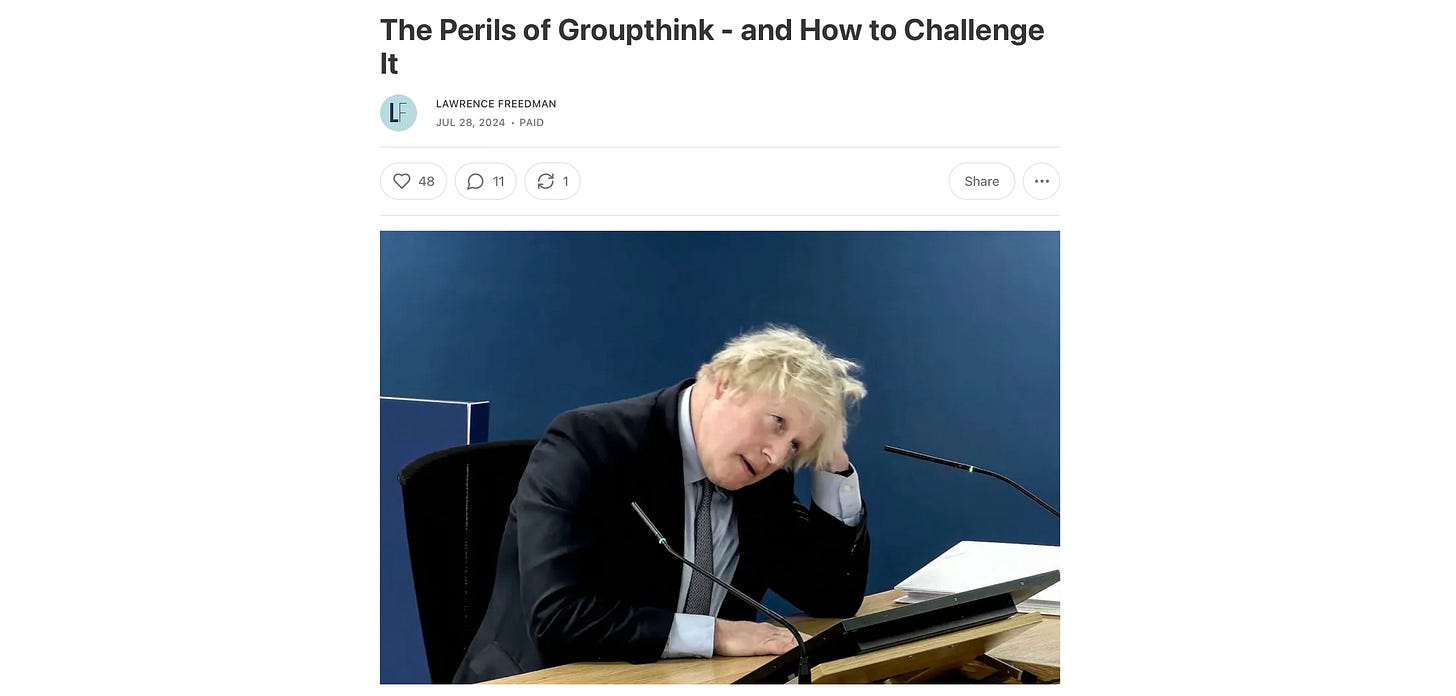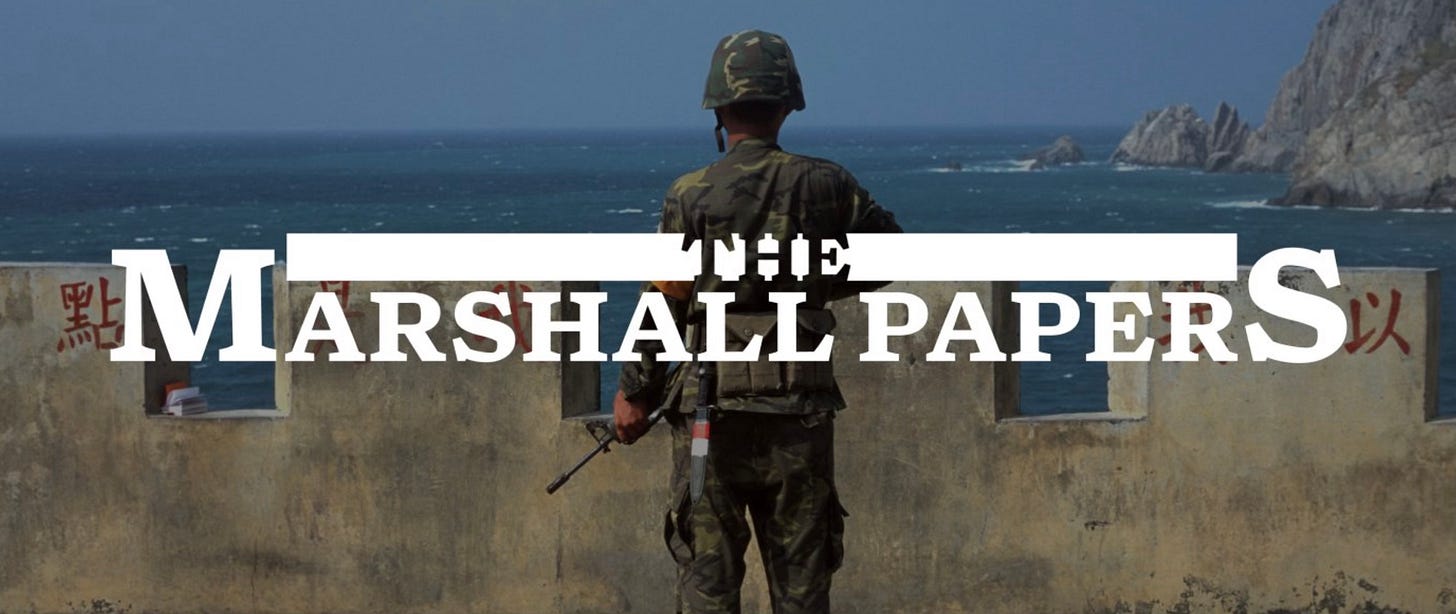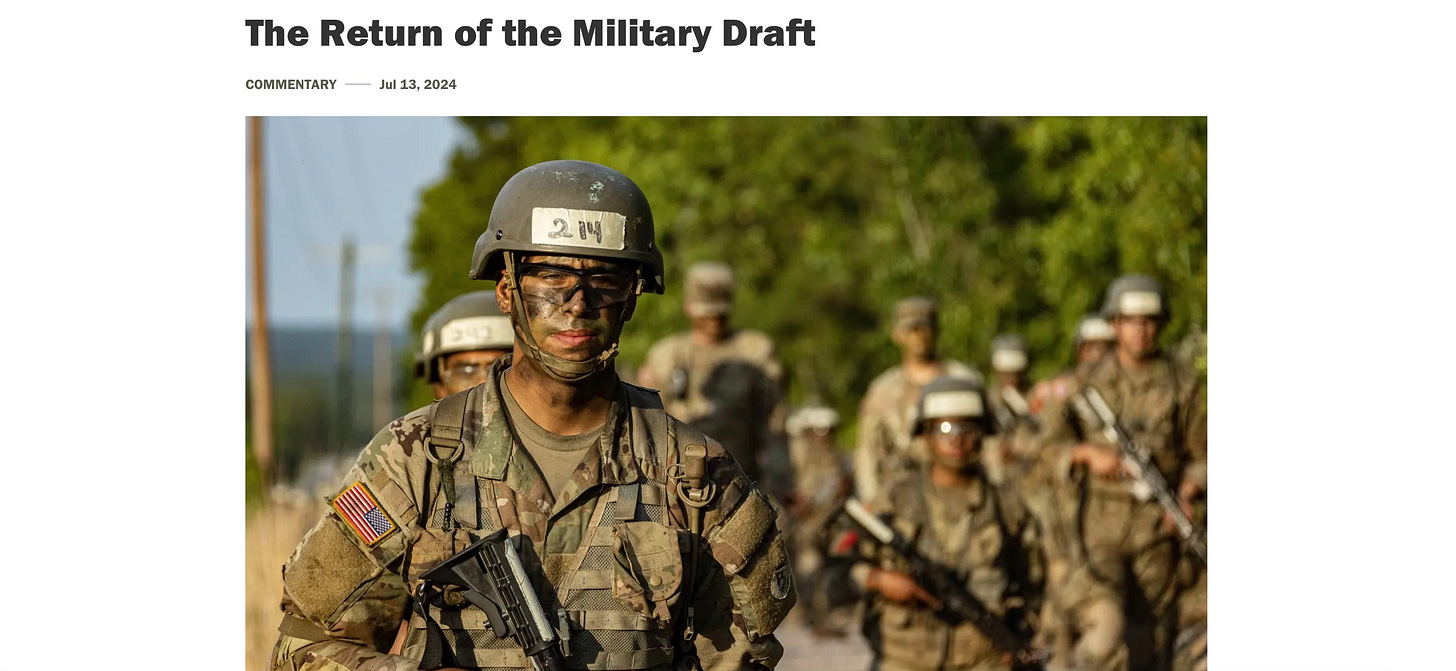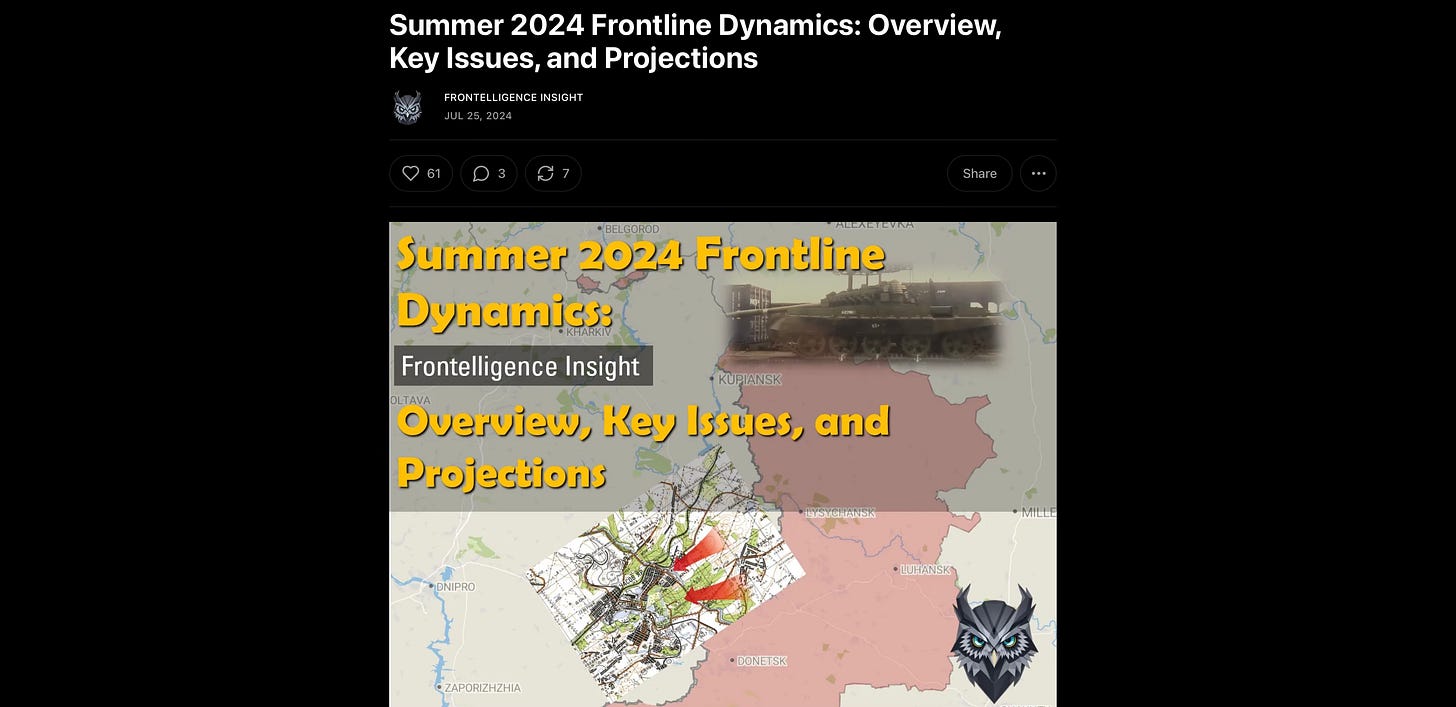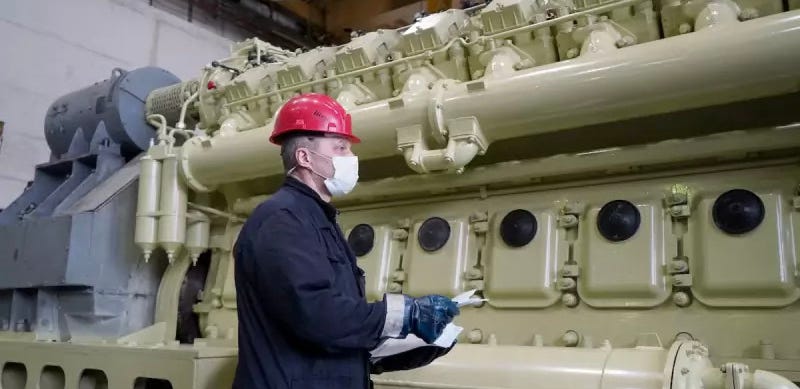The Big Five - 1 August edition
My weekly update on conflict and confrontation in Ukraine, the Middle East and the Pacific, accompanied by recommended readings on the character of modern war and planning for future conflict.
This week’s cover image is a photo taken by Ukrainian photographer, Maryan Kushnir. These images have provided an exceptional, if heartbreaking, visual record of the war in Ukraine and the courage of Ukraine’s soldiers and citizens. You can follow this amazing work here.
The week began with a series of Ukrainian strikes deep in Russian territory. Perhaps the most interesting one was a Ukrainian attack on a Russian airbase near Murmansk, about 1800 kilometres from Ukraine. One Russian Tu-22 bomber was allegedly damaged. The range at which the Ukrainians struck the Russians at this base is a new benchmark for deep strike operations in this war.
This week also saw a further escalation of tensions on the northern Israel border. Hezbollah attacked northern Israel with a rocket attack which killed multiple people including children at a soccer match in the Israel-controlled Golan Heights on July 27. In response, Israel conducted a strike operation in Beirut which reportedly killed a senior Hezbollah military commander. The IDF Air Force targeted the Hamas commander, Fuad Shukr, in response to the Hezbollah rocket attack.
Cross border attacks have significantly increased since the 7 October 2023 Hamas attacks on southern Israel. These northern area attacks are tracked by multiple organisations. One of the better maps is maintained by The Washington Institute for Near East Policy. It’s latest map of cumulative cross border attacks since 7 october 2023 is below.
The trends in this northern border confrontation at the moment are all bad.
Mid week also saw the killing of Hamas political leader Ismail Haniyeh at his residence in Tehran. Supreme Leader Ayatollah Ali Khamenei has subsequently been quoted that Iran sees it as its duty to avenge the killing of Haniyeh because he was killed on Iranian soil.
After the 7 October Hamas massacres in southern Israel, the lsraeli government vowed to hunt down all of those responsible for 7 October. The Israelis killed the deputy head of Hamas in Beirut in January, and this latest strike against Hamas leadership is likely to part of Israel making good on its promise. It is also a none-too-subtle reminder to Iranian leaders that they too are ‘gettable’ should they engage in any further direct hostilities against Israel.
Where is all this leading? Nowhere good. I have seen some reports that Iran is planning a larger strike on Israel than its failed attempt earlier this year. If so, it would probably be supported by Hezbollah and Hamas in an attempt to saturate the Israeli air defence network. If, and this is a big if, they achieved this and caused significant casualties in Israel, we might actually be leaping over the precipice of a major conflagration in the Middle East.
Emotions are high at the moment. As Samuel Zilincik wrote in a 2022 article in the Texas National Security Review, “emotions shape the choices that strategists make about the employment of military power. At the most fundamental level, emotions enable strategic choices by drawing strategists’ attention toward what matters to them in any given moment.” The question over the coming days is whether decision-makers in Tehran and Israel can use their emotions to avoid a war rather than pursue one.
Back to Ukraine, the Russians continue to make small gains on the ground while continuing to suffer significant casualties. They are also losing significant quantities of armoured vehicles, and at some point in the coming year or so, their massive reserves that were built up over decades during the Cold War will run dry. There have been many different stories on this topic over the last few months, with one of the better examinations being conduced by The Economist.
The bigger issue however is this: how long can Russia continue its current large-scale offensive which has multiple axes of advance in the north-east, east and southern regions of Ukraine? At some point, the Russians will culminate. But that point is likely to be a month or two away given Russian reserves and the likelihood that Putin is driving the military very hard to seize as much ground before the elections in the U.S. in November. He will be keen to be in an advantageous position if there is a ceasefire (which is by no means assured) and he will also want to portray to U.S. voters that a Russian victory is inevitable (which is not).
Earlier this week also saw one of the largest single drone raids on Ukraine with 89 Shahed drones being launched at targets including Kyiv. It appears nearly all were shot down. However, it shows that Putin is throwing everything at the Ukrainian people in the lead up the U.S. presidential election and the coming winter. President Zelenskyy noted after the attack that:
Ukrainians can fully protect their skies from Russian strikes when they have sufficient supplies…The same level of defense is needed against Russian missiles and the occupier’s combat aircraft.
One issue related to drones that I have been tracking closely has been the growing numbers of uncrewed ground vehicles (UGVs) that are being deployed by both sides. There are many reasons these systems are seen as attractive by both sides. This includes sending robots on missions where humans are more likely to become casualties (reconnaissance, mine clearance), to provide lower signature vehicles for sensitive missions (EW, mine detection, surveillance), and to supplement people in units where there are shortfalls in the numbers of people.
As a recent social media post by the Ukrainian military noted:
Reconnaissance drones, remote-controlled machine guns, sapper robots, and ground logistics drones in service with UAarmy. These are our weapons of victory that will preserve the lives of our defenders.
Just as we have witnessed an explosion in the use of aerial and maritime uncrewed systems in the past two years, technological developments and shortfalls in personnel are likely to drive a massive increase in the use of UGVs by both sides this year and into 2025.
Indeed, I think that UGVs offer some capabilities that if used cleverly, might allow ground forces to return to the conduct of offensive operations at a manageable cost. I have written on this issue in the past, as well as on the developments in UGVs, and will do so again in the near future.
Late this week, images emerged which reportedly show the first Ukrainian F16 flying over Lviv. I have no particularly strong views on this aircraft other than: 1. It is probably an upgrade on the current Ukrainian fighter fleet; 2. They are coming too slow and in too-small quantities but this is a training issue as well as an airframe availability thing; and, 3. They will contribute but not be a silver bullet in the war. The War Zone has some useful coverage of this issue.
Finally, continuing on the issue of aircraft, this week saw the continuation of Exercise Pitch Black in northern Australia. This is the Royal Australian Air Force’s largest annual exercise and includes air forces from across the region and around the world. This year, for the first time, USAF F-22 fighters participated as did Italian Navy’s aircraft carrier ITS Cavour.
All up, 140 aircraft, around 4,400 personnel and 20 different nations are participating in this year’s exercise. As I finish writing this update, I am in Darwin and have seen a nice selection of fighter aircraft from different nations flying overhead.
This week, I also published two other articles here. The first explored the Ukrainian long-range strike of the past week, the broader development of this capability and the challenges the Ukrainians might face with strike operations in 2024 and into 2025. I also provided an update on the release of my new book, The War for Ukraine, which occurs on 13 August.
So, to this week’s readings….
The recommended articles include an interesting piece on group think from Sir Lawrence Freedman, a study on different options that China might consider to coerce Taiwan into becoming a part of the PRC, recruiting in military organisations and the trajectory of the war in Ukraine. As always, if you only have time to read a single article, the first one is my pick of the week.
Happy reading!
1. The Perils of Groupthink
Many of us have experienced situations where the teams or organisations we were members of made bad decisions because key assumptions were not sufficiently challenged, or challenged at all. In this article, Sir Lawrence Freedman explores the concept of groupthink. His article makes many great points, including this one: “The starting point for groupthink about scenarios for a future crisis tends to the supposed ‘lessons’ derived from the last one. The assumption the past is always be a reliable guide to the future is the first that should be challenged.” You can read the full article here.
2. On China and Taiwan
Recently, U.S. scholars Hal Brands and Jude Blanchette assembled a series of papers that explored how China might think about a takeover of Taiwan, short of a full scale military invasion. The resulting papers cover a range of different scenarios that included subversion, enhanced coercion and other measures short of war. Brands and Blanchette write in their introduction that “the more successful Washington and its friends are in deterring the “D-Day” scenario, the more Beijing may be incentivized to focus on lower-intensity, or less obvious, forms of aggression instead.” This is a worthy collection of articles, and can be read here.
3. The Return of Conscription
During the Cold War, conscription or national service was an unremarkable and normal element of many democratic nations’ security strategies. At the end of the Cold War, many of these systems were reduced in scope or dropped altogether. However, now that it is finally dawning on politicians that post-Cold War solutions will not meet the challenge of more aggressive and large authoritarian nations, the concept of conscripting people to serve their nation is one again being considered in many democracies. This commentary from RAND provides some useful insights on the issue as debate continues. You can read the piece here.
4. The Trajectory of the War in Ukraine
The team at Frontelligence Insight are one of the foremost analytical groups that watch and assess different aspects of the Russo-Ukraine War. In this piece, they provide a very useful assessment of the current status of the war, and challenges that both sides are likely to face between now and the end of 2024. A highly recommended read for anyone who is interested in the war, you can read the full assessment here.
5. Russia’s War Industry
One of the very important issues that has been re-highlighted by the war in Ukraine is the industrial capacity of nations to support sustained combat in a long war. This is hardly a new lesson; since the beginning of the First Industrial Revolution, industrial capacity has been a key determinant in the outcome of wars. In this article from The Jamestown Foundation, the author explores Russian industrial output to support its war against Ukraine. You can read the full article here.





